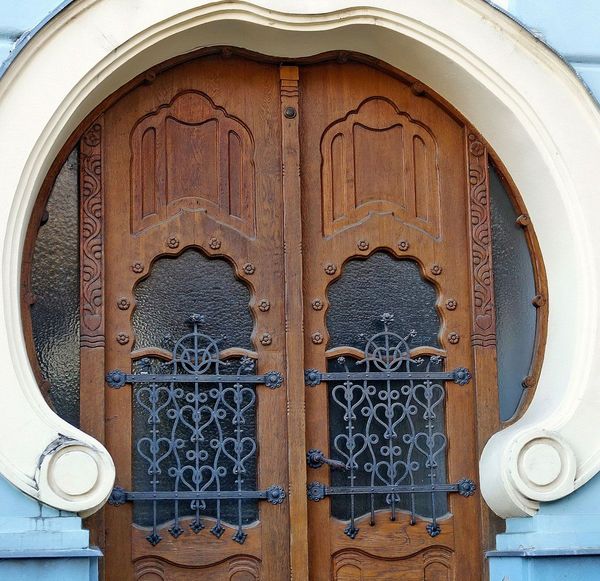Since the foundation of the Contemporary Architecture Center (KÉK) fifteen yeas ago, in addition to professional talks and projects, it has also given room to visual arts from time to time, as an art exhibition is a medium in which the theoretical and practical complexity of the built environment and the city can be reflected on several levels. This is where the team of Urbanum, initiating a discussion implemented through artwork, opened their first exhibition with other artists focusing on the city under the title A város árnyéka (The Shadow of the City), where instead of theories or projects, the diversity of metaurbanism is reflected in artefacts this time.
In the latest episode of our Urbanum series, the founders of the initiative guide us through the elements of the exhibition titled the Shadow of the City, their meaning and their symbolic urban context.
The experience starts on the way already, as we navigate through the city, we observe or on the contrary, we don’t even notice the versatility of the buildings and the hustle of the street. The city leaves a marks on us, casts a shadow upon us even if we don’t pay attention to it.
The conscious confrontation, that is, the exhibition itself starts in KÉK’s shop window, where, in addition to an endlessly complex manifest aiming to map the urban labyrinth linguistically, the works of Balázs Csizik are exhibited. Or, to be more accurate, works in which the urban fabric plays the leading role—as the way we confront the city is first and most directly through its material, and only the material can cast a shadow.
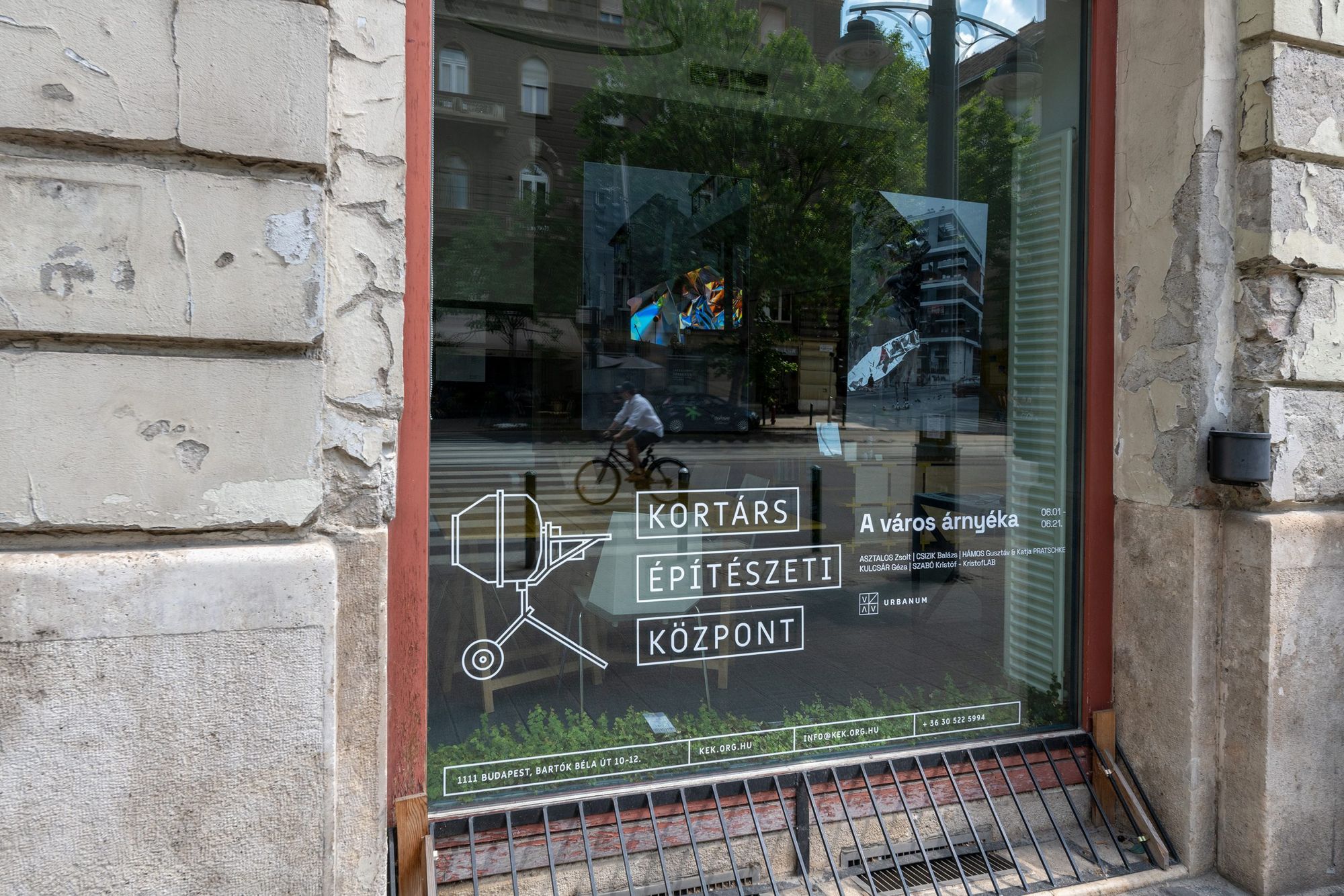

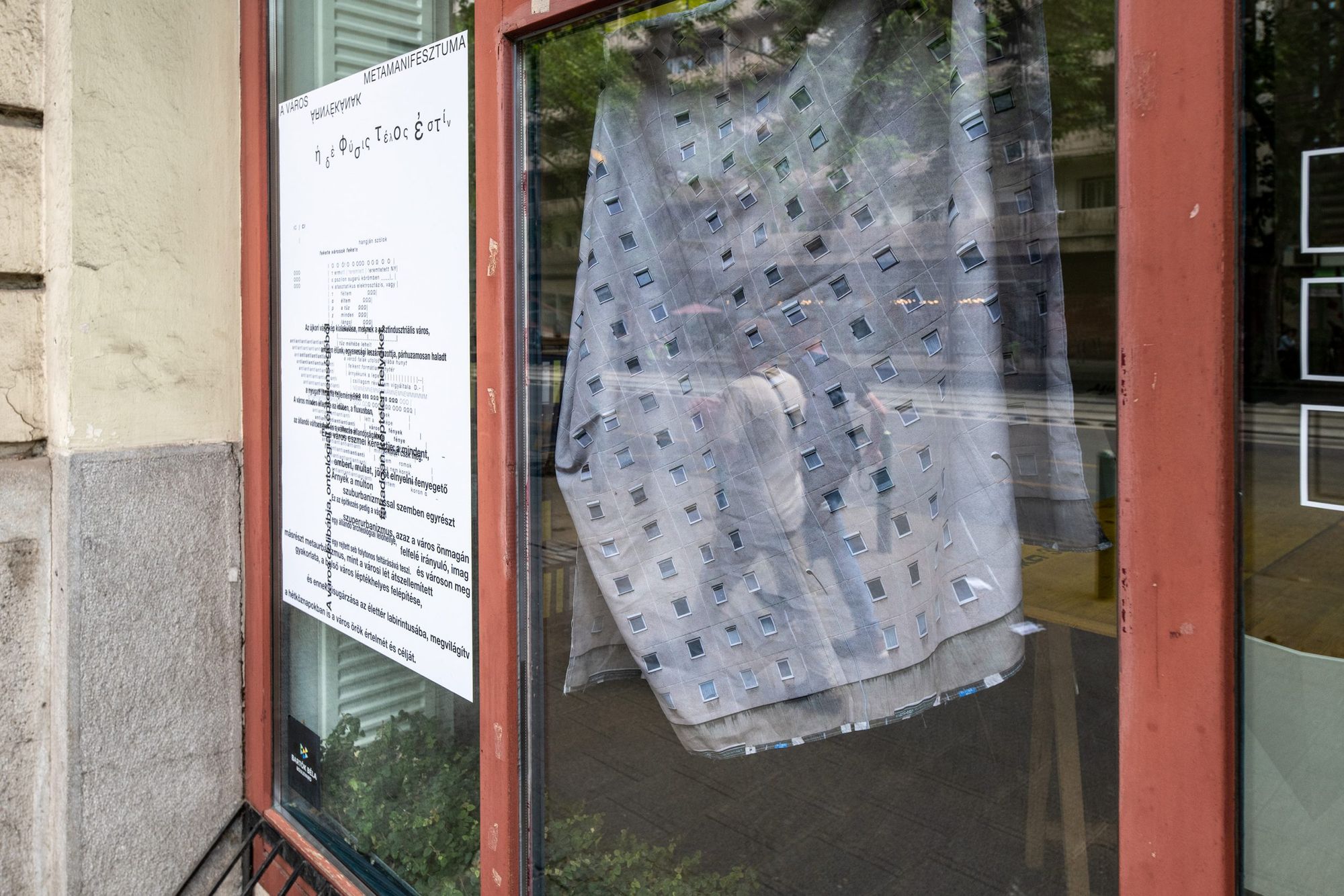
Concrete is an emblematic building material of our age and the near past we think back of with ambivalent feelings. In the shop window, concrete sometimes appears in its very self, as a shattered and then rebuilt object, while at other times it manifests on photos, alluding to the many possible states of the simplicity of the primary object. But concrete enters into a dialogue with other material qualities, too: one time it softens on textile, other times it acquires a new kind of lyricism with the intrusion of wooden elements, and finally it transforms into an intellectual surface by taking up an absurd shape in the digital space. This is how the building material casts various shadows in us.
Upon entering KÉK’s office space, other than the familiar things of work, which are, as a matter of fact, also part of the urban fabric, we see small towerblock miniatures, made by Balázs Csizik based on Budapest’s iconic housing estates. The process of the city becoming a part of our inner self begins, a sort of mental urban shadow play: the built elements of the urban space appear still recognizable but at a more human scale in this uncertain, intermediate space of the exhibition. A giant walk among the towerblocks leads us to the core of the exhibition, where the works get more concentrated and present the aesthetic and thematic shadows of each other. This is the space where the structure of the inner city is built, where we face and confront the city’s phycological, artistic and temporal shadows.
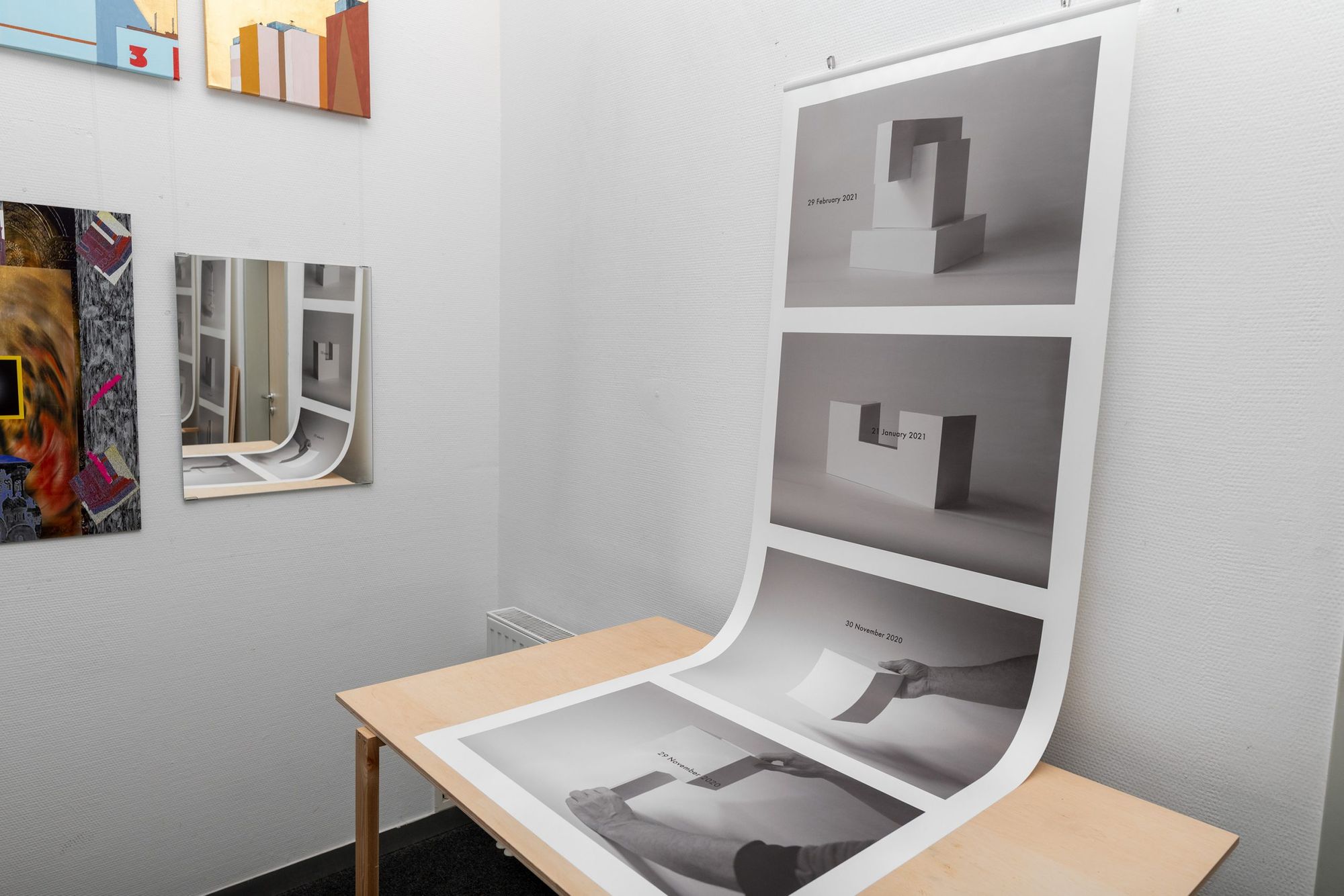
The images of Zsolt Asztalos reflect the internal city experience quite directly yet still in an almost poetic manner: here the miniatures move to photos, thus they remain hidden in the realm of the creator’s experiences and we only get to see their images and shadows. The miniatures themselves are, as a matter of fact, memorials—memorials of the days spent in the city, and parts of a visual diary formulated on a secret language.
On the opposite wall, Balázs Csizik’s old and new images refer back to the shopwindow’s focus on transmuted materiality, while the gradients open the illustrated buildings visually upward, and, what’s even more important, upward for experiencing, too: housing estates, tower blocks and buildings that, during our everyday encounters, would cast shadows of darker hues rather depressingly and unsuccessfully. But art can save them.
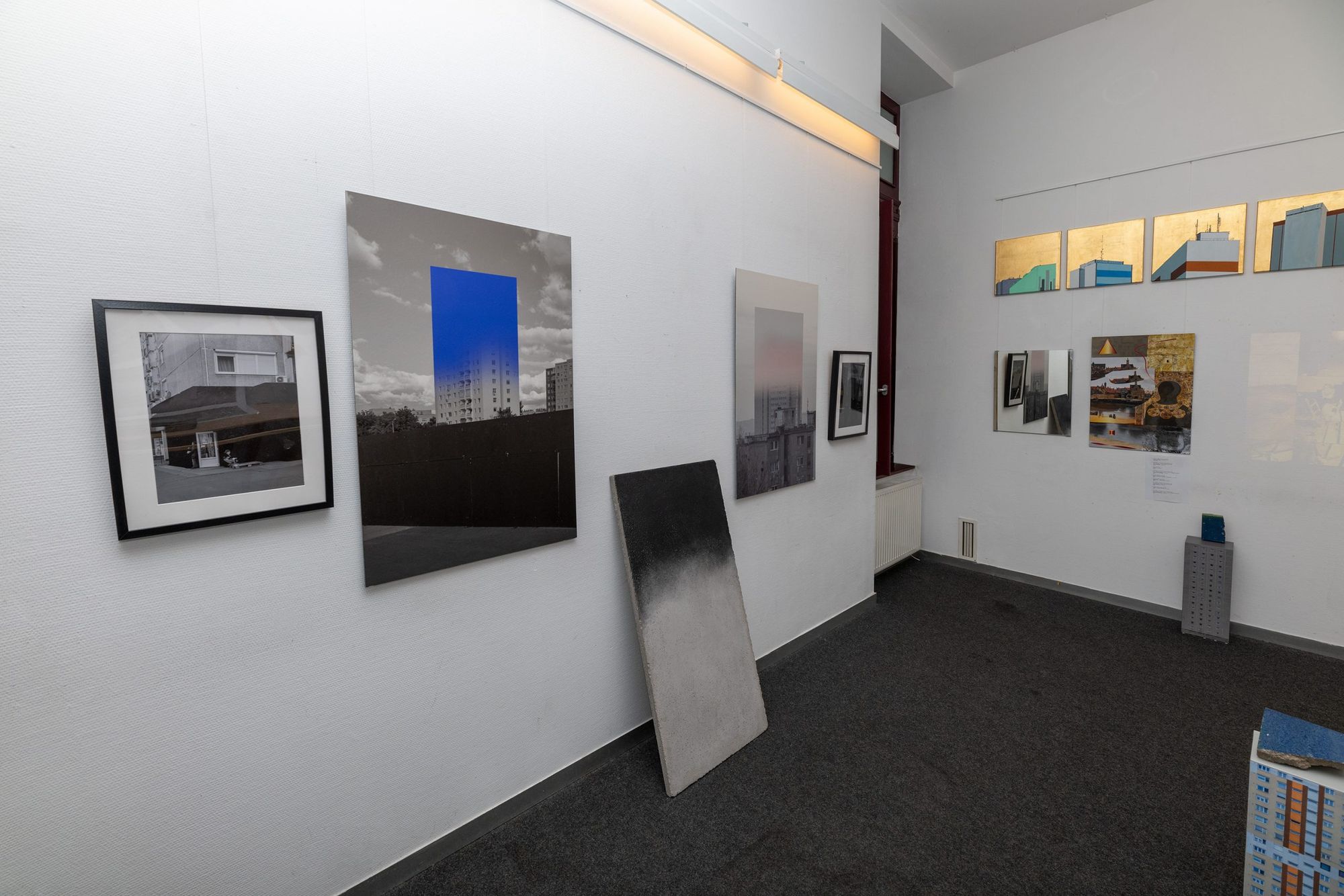
The opposite wall, which is emphatic both in terms of spatial organization and in a thematic sense, is the end point of this artistic city rescue program (at least in the exhibition space), at the same time the arrangement of the items is another architectural reference: the original function of the iconostasis was to separate the sacred space of the miracle from the regular operation of the society—that is, the city itself. The iconostasis is the end point of the city, the canvas on which the city’s entire shadow is cast, embracing and uniting all faces of the urban-collective life, from material to sacred-immaterial, from spatial to temporal.
In addition to preserving the traditional visual organization principles in an abstract manner, the disintegrated icons of the bottom line (works by Géza Kulcsár), thematize this multivalent, divergent set of experiences still interlocking in the city’s past, present and future—confronting the city itself. The mirrors complementing the composition also amplify this confrontation.
In the top line of the iconostasis, the rise taking place in the space of art is made complete by the urban icons painted by Kristóf Szabó (KristofLab), rising above the plane occupied by the other exhibited items also in a physical sense. The ordinary, indifferent or even grim objects of the built environment (housing estates and tower blocks) emerge from their own shadows and show their best potentials in the transcendent light illuminating them from behind.
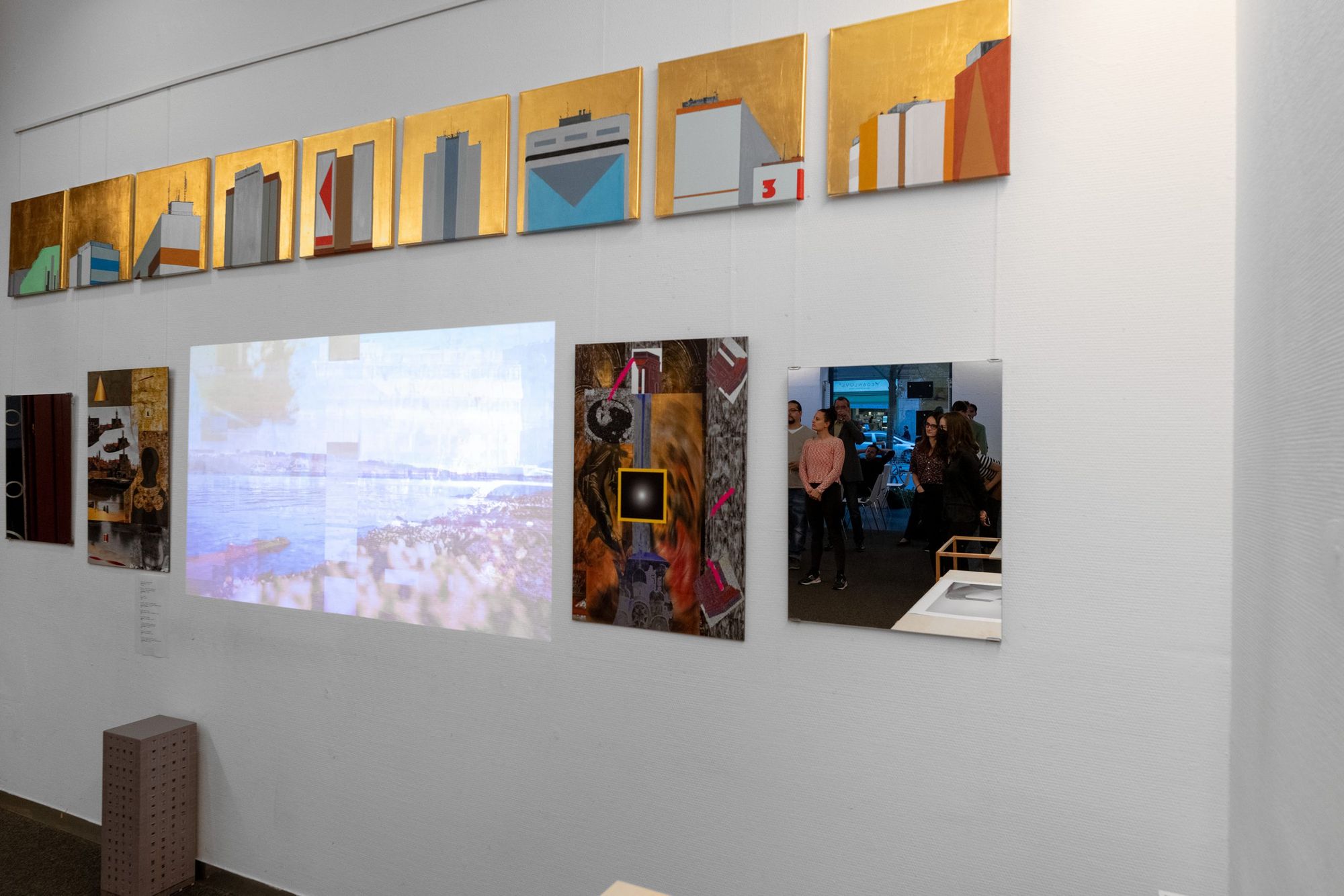
A series of images is projected in the center of the space with the contribution of all creators. The chaos of the flashing images and words appearing in a fragmented manner, in the spirit of a pleasant and at the same time disturbing aesthetic, are interrupted and framed by more organized pictures—the legendary films of Gusztáv Hámos and Katja Pratschke construing imagined cities, Kristóf Szabó’s error videos and Zsolt Asztalos’s “found” records on the creative use of the past. But here words run dry, just like the material disappears in the medium of projected light for good.
The city does have a shadow—but it has a light, too. Seeing the two together, accepting them without judgment and remaining open to understanding the city or even trying to make it better, the city can reflect in us and we can reflect in the city.
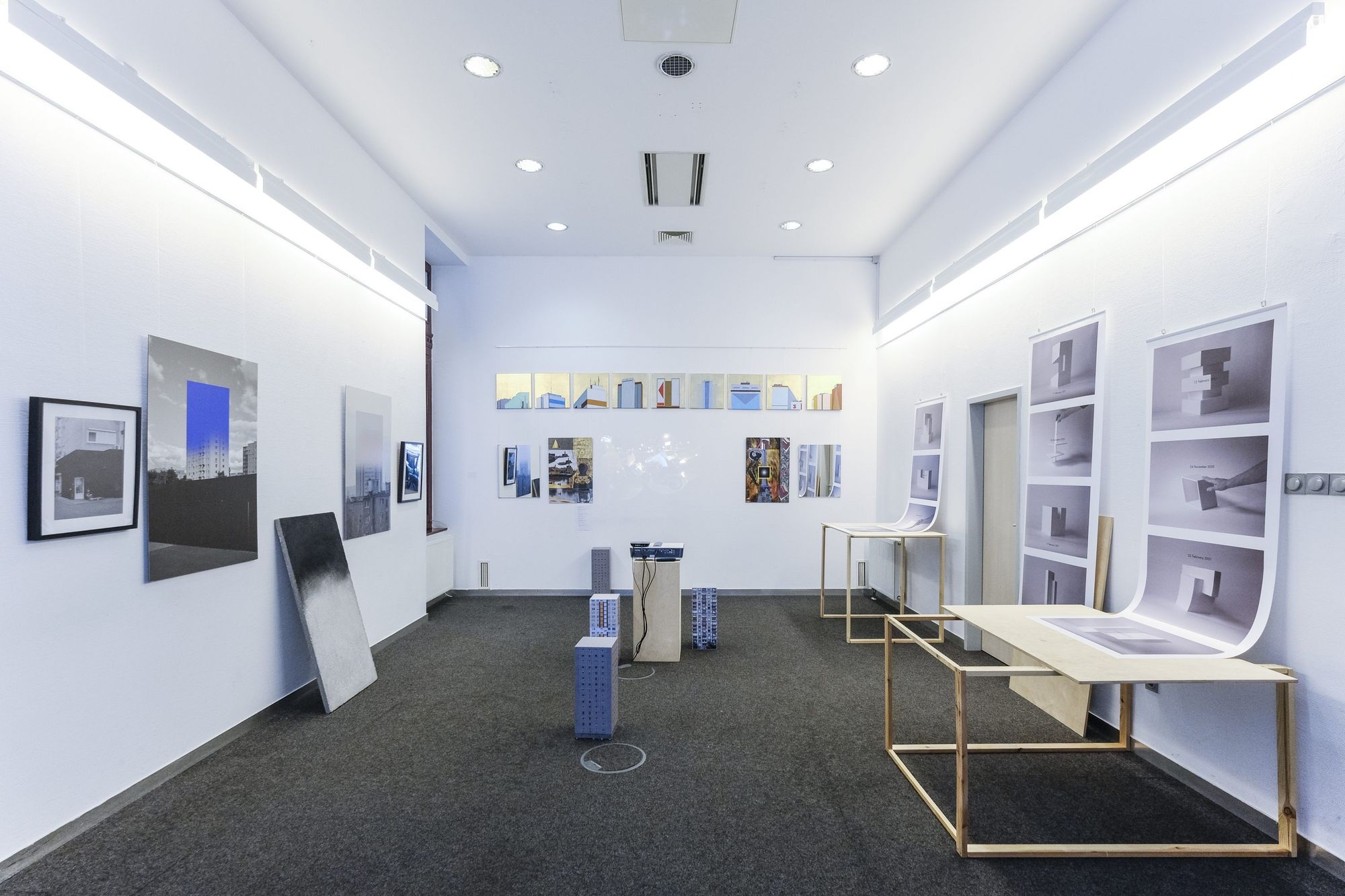
Check out the event’s Facebook page for more information!
The exhibition is open between: June 1 2021 – June 21 2021
Exhibiting artists: Zsolt Asztalos, Balázs Csizik, Gusztáv Hámos, Géza Kulcsár, Katja Pratschke, Kristóf Szabó KristofLab
Curated by: Emőke Böjthe
Concept: Géza Kulcsár
Photos: Balázs Csizik, Csongor G. Szigeti
Urbanum | Web | Facebook | Instagram
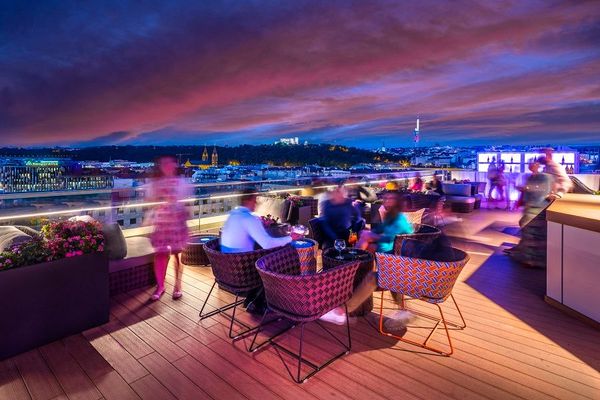
A drink above the city | TOP 5
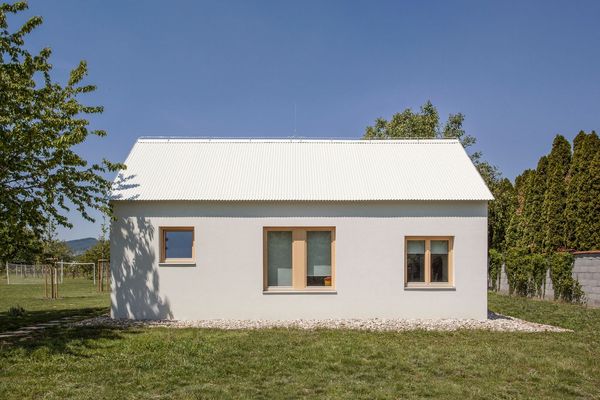
Summer house | totalstudio
